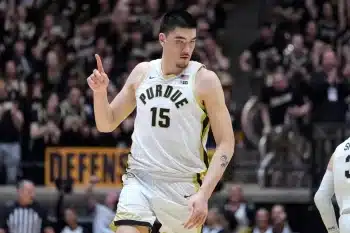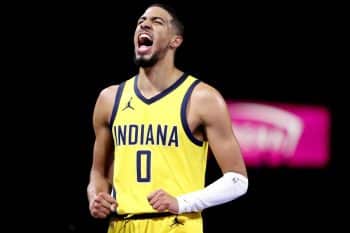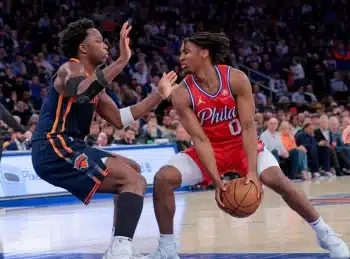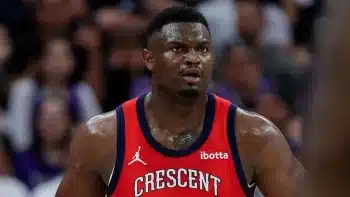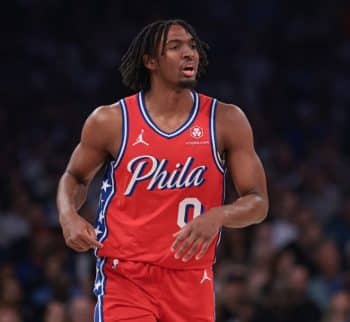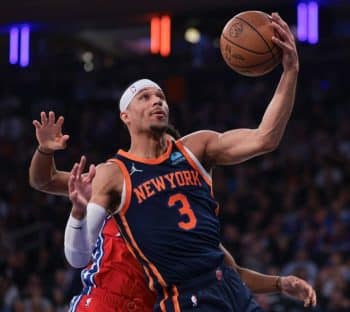NBA
NBA PM: The Next Steps For Lottery Reform

The lottery reform voted in by the NBA’s Board of Governors last week won’t end tanking and could dramatically increase it. The reform targeted one specific form of tanking — the “race to the bottom,” where teams such as the Philadelphia 76ers positioned themselves to lose as many games as possible to maximize draft assets. The league reportedly characterized this round of changes as an “incremental” step in lottery reform. So what’s next? What further changes could or should be contemplated?
To answer this question, it should be noted that Basketball Insiders has previously dissected the motivations behind lottery reform. While the quest to end tanking gets all the headlines, the vastly more important — yet under-reported — issue is which teams have a chance to draft a generational talent capable of winning multiple championships. Since 1980, about 90 percent of NBA champions have had one of 11 superstars that were central contributors on multiple championship teams. Thus, to have a serious chance at contention, a team needs to acquire one of these generational talents that only come around about three times per decade. It’s through this prism of access to talent that we’ll examine other potential steps.
By looking at a comparison of the new lottery odds, which will take effect in the 2019 NBA Draft, it’s easy to understand why many are arguing that the latest lottery reform could increase tanking rather than decrease it.
Here is an ESPN graphic on how NBA Draft lottery odds change in 2019 pic.twitter.com/Jk8X7q0J3Z
— Adrian Wojnarowski (@wojespn) September 28, 2017
Looking at the odds for a team to move into the top three in the draft, notice that the previous odds in parenthesis scaled dramatically upward the more a team lost. This created the “race to the bottom” incentive since losses could lead to increased odds of landing a franchise-altering player. The new odds are “flattened,” meaning the four worst teams have nearly identical odds while odds for teams in the middle of the lottery have dramatically increased. Teams eight through 11 had their odds of moving into the top three roughly doubled.
As a consequence, teams no longer need to plan their way into one of the league’s worst records to optimize lottery odds. Previously, the team with the fifth-worst record had less than half the chance of landing a top-three pick compared to the team with the worst record. Under the new system, the teams with the fifth- and sixth-worst records have odds that are about 75 percent as good as the worst team. If you’re the team with the 11th-worst record at the trade deadline, are you a buyer hoping to move up a few places and make the playoffs? Or do you trade away assets and possibly waive valuable players that are not in your team’s long-term plans to chase lottery odds that are more evenly distributed starting in 2019?
By flattening the odds, the NBA has distributed the chances for a team to luck into a top-three pick — and potentially a generational star — to be more favorable for a larger number of teams. And that’s why further steps at lottery reform will be extremely difficult to pass. As we take a look below at potential additional steps, a common theme will emerge. These steps could further dis-incentivize losing, but they’re all unlikely to pass because they would restrict access to high picks that could potentially land a superstar.
The “no repeater” rule
ESPN’s Zach Lowe reported after the league’s previous lottery reform proposal was voted down that many teams didn’t like it when the Cavaliers won the top overall pick in three out of four drafts. To avoid a repeat of the “insta-rebuild” the Cavaliers were able to execute, one change contemplated for the latest round of reform — but which did not make it into the proposal that was recently voted on and adopted — was a rule restricting teams from moving up in the draft in consecutive seasons. Such a rule would have prevented the Cavaliers from picking first in the draft more frequently than every other season.
While this rule would further discourage teams from bottoming out — since remaining bad for multiple years wouldn’t be rewarded with consecutive chances at the top pick in the draft — the reason the rule didn’t make it to a vote should be fairly obvious. NBA teams would love to restrict other teams from access to superstars, but they don’t want that access restricted for themselves if misfortune dooms them to multiple trips to the lottery. This could be why the Oklahoma City Thunder were the only organization to vote against the latest reform proposal. Thunder GM Sam Presti had so much success drafting high in the lottery — selecting Kevin Durant, Russell Westbrook and James Harden in successive years — that the Thunder may have wished to avoid any restrictions on Presti repeating that success the next time it needs to rebuild.
The postseason consolation tournament
The surest way to ensure that draft position is not based solely on losing would be a postseason tournament for teams that miss the playoffs that provides an opportunity to move up by advancing. Basketball Insiders previously proposed a tournament involving a home-and-home series for each round with the winner advancing based on aggregate points. For each round a team won, it would move up one position in the draft. Thus, if a team was in position to select first prior to the tournament, it would have to win at least one round to ensure that another team didn’t move ahead of it.
This idea would drive massive interest and generate massive revenue for the NBA, two factors that would normally spur a profit-driven league to take notice. But a consolation tournament in any form is unlikely for the same reason as the “no repeater” rule. Teams can talk until they’re blue in the face about taking away the incentive to tank, but the moment you propose a rule that would take away some of the control teams have over their own draft position, the interest will wane.
Since the incentive to obtain superstar players is much greater than the incentive to prevent other teams from tanking, teams are likely to remain much more interested in improving their own odds than in making the system “fair.” A consolation tournament would drive new behaviors aimed at improving a team’s competitiveness at the end of the season. Players that are waived or bought out at the trade deadline would suddenly be in line for a financial windfall since teams would be motivated to lose for most of the season but become more competitive right at the end. That could create just as much of a PR nightmare for the league as tanking does currently.
A three-tiered lottery system
The only system that has been proposed that would eliminate any incentive to tank out of a low playoff seed is a three-tiered lottery system. Under this proposal, there would be a lottery tier composed of teams that have a chance to move up in the draft, a playoff tier composed of teams that are excluded from the lottery, and a randomly-sized middle tier that is also excluded. By randomizing the number of teams that are allowed to take part in the lottery, it would make it impossible for teams to plan their way into the lottery. If a team doesn’t know how far it has to drop in the standings to get into the lottery, it would be much less likely to tank out of a low playoff seed.
The flaw with this proposal is the same as the others. To implement a three-tiered system, teams would have to vote in favor of reducing the number of teams that get to participate in the lottery. This rule is the ultimate answer to tanking, but a team is unlikely to vote for any proposal that could hurt its own chances.
The NBA has said that the latest round of reforms is only an incremental step, but it’s hard to imagine further steps that would be attractive enough to lead to implementation. What’s far more likely is that the latest reform is how the lottery system will remain for years to come as teams assess its impact. The impetus for future change will likely result from unintended consequences of the latest lottery reform, which won’t be understood for years. While we wait for that understanding to develop, don’t expect much in the way of additional lottery reform.
